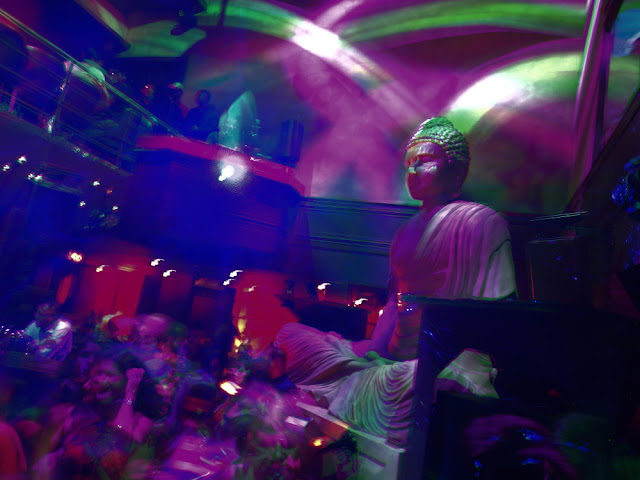 |
| 16.30 - fun time at Elegushi Beach |
Harmattan is filling the air with thin particles of sand. Lagos skyline is blurred as if there was fog and sun at the same time. It is the last of day the year. Victoria Island and Ikoyi are asleep, most Lagosians are busy on the outskirt of the city to prepare the New Year celebrations, be it at Church or with their families. And the Young sleep in anticipation of the night to come.
Lagos Island though is still alive, particularly the Balogun market which buzzes are usual, perhaps a little less because of no deliveries being made that day. Customers and sellers were still out and about to buy and trade goods of all sorts.
 |
| 12.00 noon - gingery view at Balogun market |
I was looking for a hat, of the kind of Panamas. A year ago, I had got one chinese paper-made that looked nice at that time. This time, going through the market, it looked like the latest version of something similar to a Panama hat was everywhere the same (paper-made but a bit heavy and plastic in touch with a wrapper sealed with a golden medal). As we were going through the market it became apparent that male fashion is distinctly split from female fashion geographically. When one is looking for something, one should first figure out which section of the market the item belongs to and then head there and try one's luck. Touts, looking for a tips from seller and buyer, were offering to shepherd customers to the likely destination of their choice.
 |
| 13.30 - Pot carving workshop in Ikoyi |
While the city was fairly empty, beaches were very busy with people willing to relax and have fun in the waves with their families and friends. The usual set-up of hawkers, 200 naira for trousers, a shirt or a t-shirt, 300 naira to have one's picture taken (as advertised on the pink t-shirt of the photographer), suyas packed in small aluminium boxes (to be distributed across the beach without customers needing to go to the suya stand and wait there) and obviously the usual touts from the bars set along the beach offering the "best location" to have a drink which, if one is not careful, can be expensive if one has forgotten to negotiate beforehand.
 |
| 17.00 - busy time at Elegushi |
In the evening, parties across town, Bar Beach with a Glo sponsored "count down". We landed in Spice Route, an indian flavoured restaurant/club, awash with whisky and Bollywood music, built around a giant Buddha overlooking the dance floor. It is arguably one the best place in Lagos, though not the preferred one for affluent Nigerians who like to park their Ferraris, Porsches, Rolls-Royces and other G-Wagons along Akin Adesola to go to SIP on the first floor of what used to be called Paris-Deli and which was recently rebranded ZenBar. Sip includes its own VIP lounge, separated from the rest of the club by a simple transparent glass wall, to make sure that VIPs can fuel the curiosity and the envy of ordinary folks, outside of the VIP aquarium. And I suppose that the aquarium also satisfies the appetite of the "big fish" to mark their status by sitting and sipping their drinks in the aquarium.
 |
| 23.30 - dancing dinner at Spice Route |
It is now time to wish Happy New Year for 2017!





Comments
Post a Comment